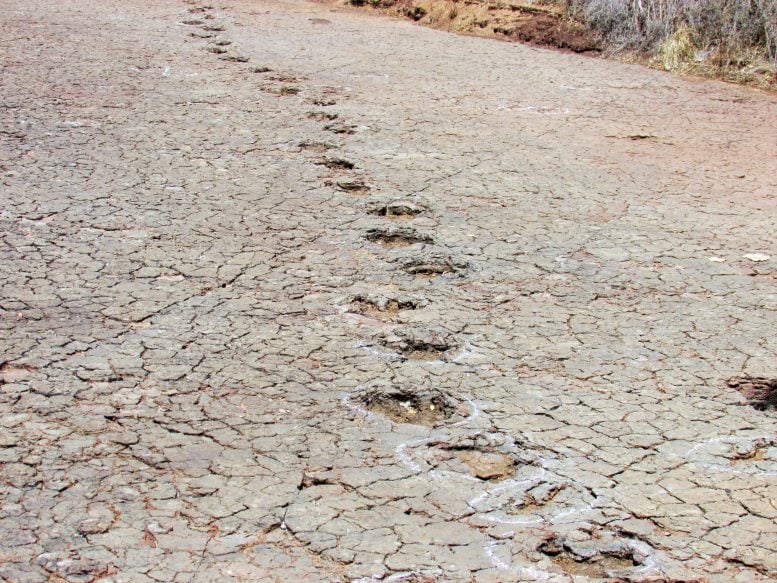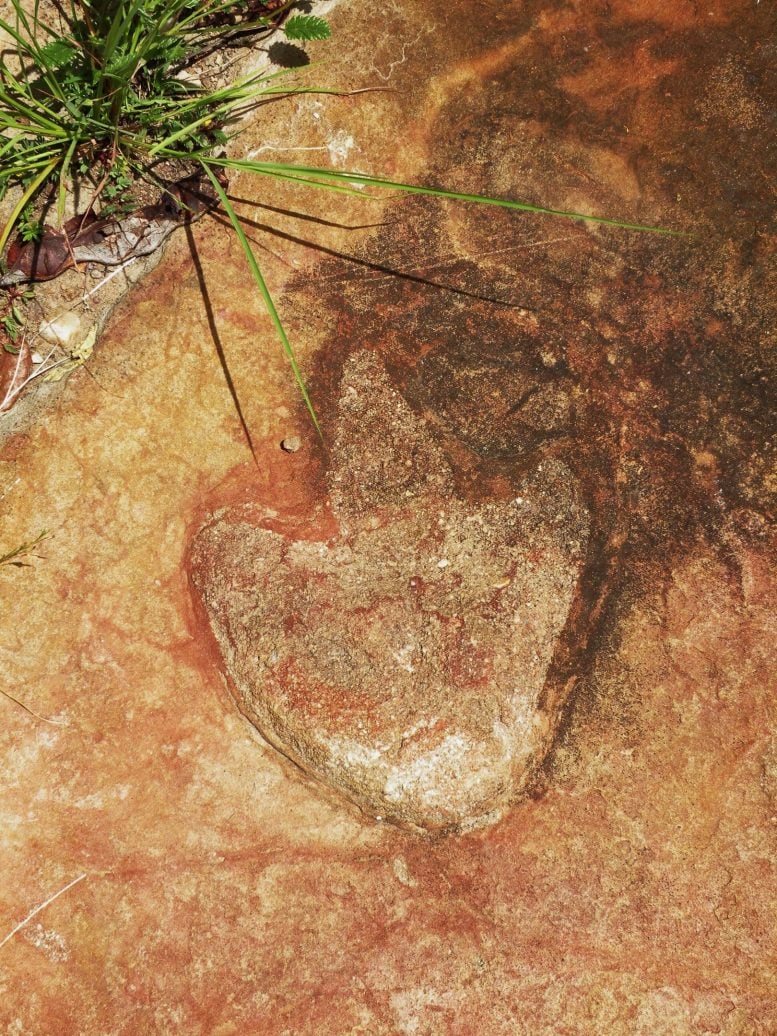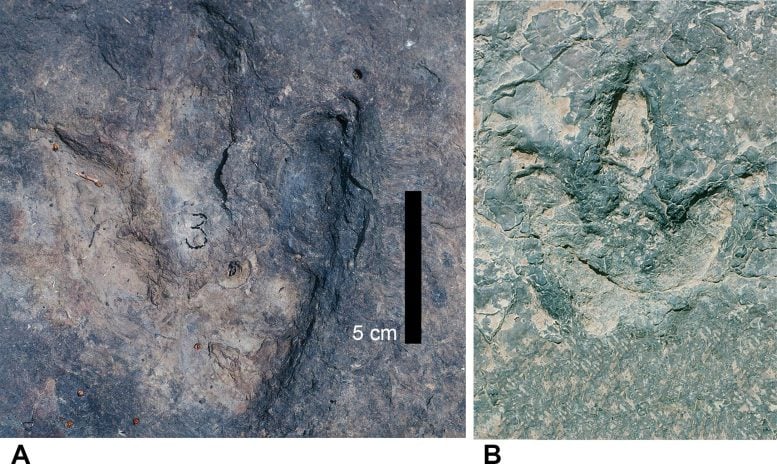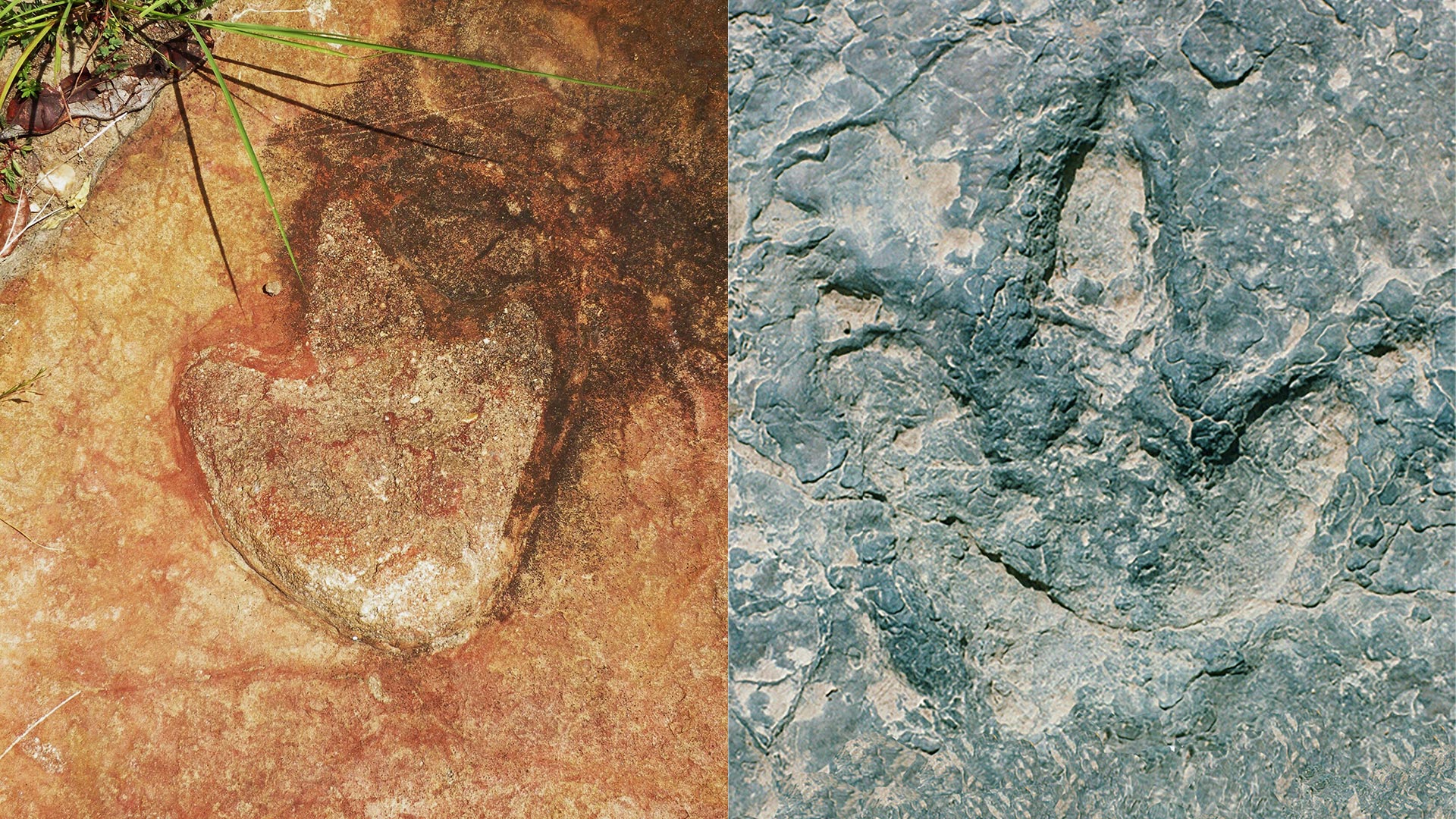A groundbreaking study has uncovered a set of nearly identical early discoveries. Cretaceous period Dinosaur footprints on two separate continents illustrate the prehistoric relationship between South America and Africa.
These findings provide compelling evidence that a narrow land bridge allowed dinosaurs to migrate between these continents before they drifted apart, forming the South Atlantic Ocean.
Dinosaur footprints discovery links continents
An international team of researchers led by paleontologist Louis L. Jacobs of Southern Methodist University has discovered identical sets of dinosaur footprints dating back to the Early Cretaceous period on two now-different continents.
More than 260 dinosaur footprints have been discovered in Brazil and Cameroon, showing where land-dwelling dinosaurs last managed to freely cross between South America and Africa millions of years ago before the continents separated.

A basin preserved in the sediments of the Lower Cretaceous floodplain. Photo: Ismar de Souza Carvalho
“We found that these artifacts were similar in age. They were also similar in their geological context and plate tectonics. In terms of their shapes, they were almost identical,” Jacobs said.
The footprints, etched into mud and silt, have been found along ancient rivers and lakes more than 3,700 miles, or 6,000 kilometers, apart. The footprints were left by dinosaurs 120 million years ago on a single supercontinent known as Gondwana — which broke away from the larger landmass of Pangaea, Jacobs said.
Narrow communication facilitated dinosaur migration.
“One of the smallest and narrowest geological connections between Africa and South America was the elbow of northeastern Brazil off what is now the coast of Cameroon along the Gulf of Guinea,” Jacobs explained. “The two continents were connected along this narrow stretch, so that animals on either side of this connection could move across it.”
Most dinosaur fossils were created by three-toed theropod dinosaurs, said Diana B. Vineyard, a research associate at Southern Methodist University and co-author of the study. Some were also likely created by sauropods or ornithischians, she said.

Northeastern Brazil. Credit: Ismar de Souza Carvalho
Co-authors of the study included Lawrence J. Flynn in the Department of Human Evolutionary Biology at Harvard University, and Christopher R. Scotese in the Department of Earth and Planetary Sciences at Harvard University. Northwestern University Ismar de Souza Carvalho at the Federal University of Rio de Janeiro and the Center for Geosciences.
The New Mexico Museum of Natural History and Science published the study in honor of the late paleontologist Martin Lockley, who spent much of his career studying dinosaur footprints.
Dinosaur footprints tell the whole story
Africa and South America began to split apart about 140 million years ago, opening cracks in the Earth's crust called fissures along pre-existing weaknesses. As the tectonic plates beneath South America and Africa moved apart, magma from the Earth's mantle rose to the surface, creating new oceanic crust as the continents pulled away from each other. Eventually, the South Atlantic Ocean filled the space between these two newly formed continents.

Signs of some of these major events are evident between the two sites where the dinosaur footprints have been found—in the Borborma region of northeastern Brazil and the Koum Basin in northern Cameroon. Both areas are hemibasins—geological structures formed during rifting as the Earth’s crust breaks apart and cracks form—that contain deposits of ancient rivers and lakes. Along with the dinosaur tracks, these deposits contain fossilized pollen grains that date back 120 million years.
Before the continental connection between Africa and South America was severed, rivers flowed and lakes formed in the basins, Jacobs says. Plants fed herbivores and supported a food chain. The muddy sediments left behind by the rivers and lakes contain dinosaur footprints, including those of carnivores, documenting that these river valleys were able to provide specific pathways for life to move across continents 120 million years ago.

“Extreme travel lover. Bacon fanatic. Troublemaker. Introvert. Passionate music fanatic.”







More Stories
A fossilized creature may explain a puzzling drawing on a rock wall.
MrBeast Sued Over ‘Unsafe Environment’ on Upcoming Amazon Reality Show | US TV
Watch comets Lemmon and SWAN approach Earth today